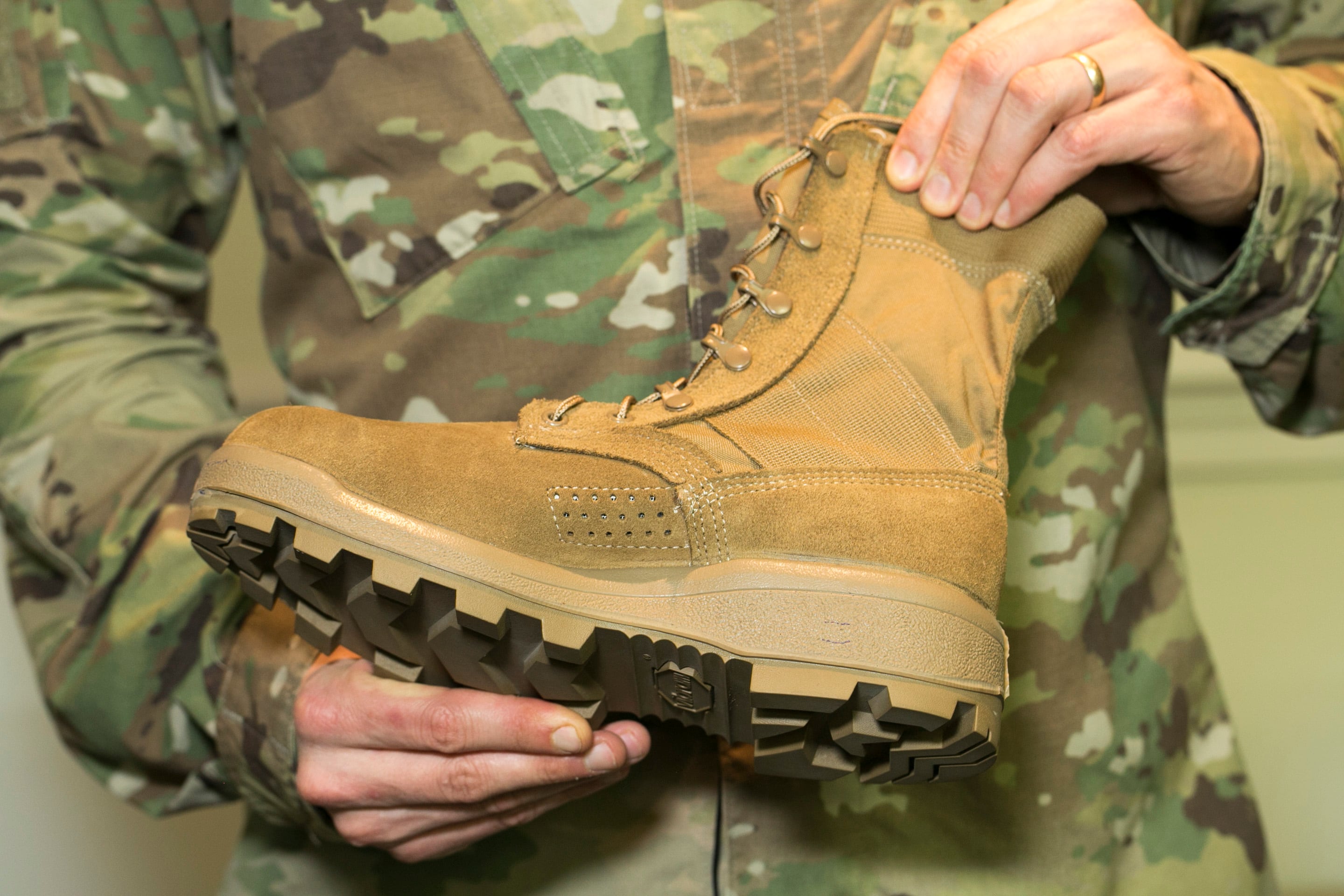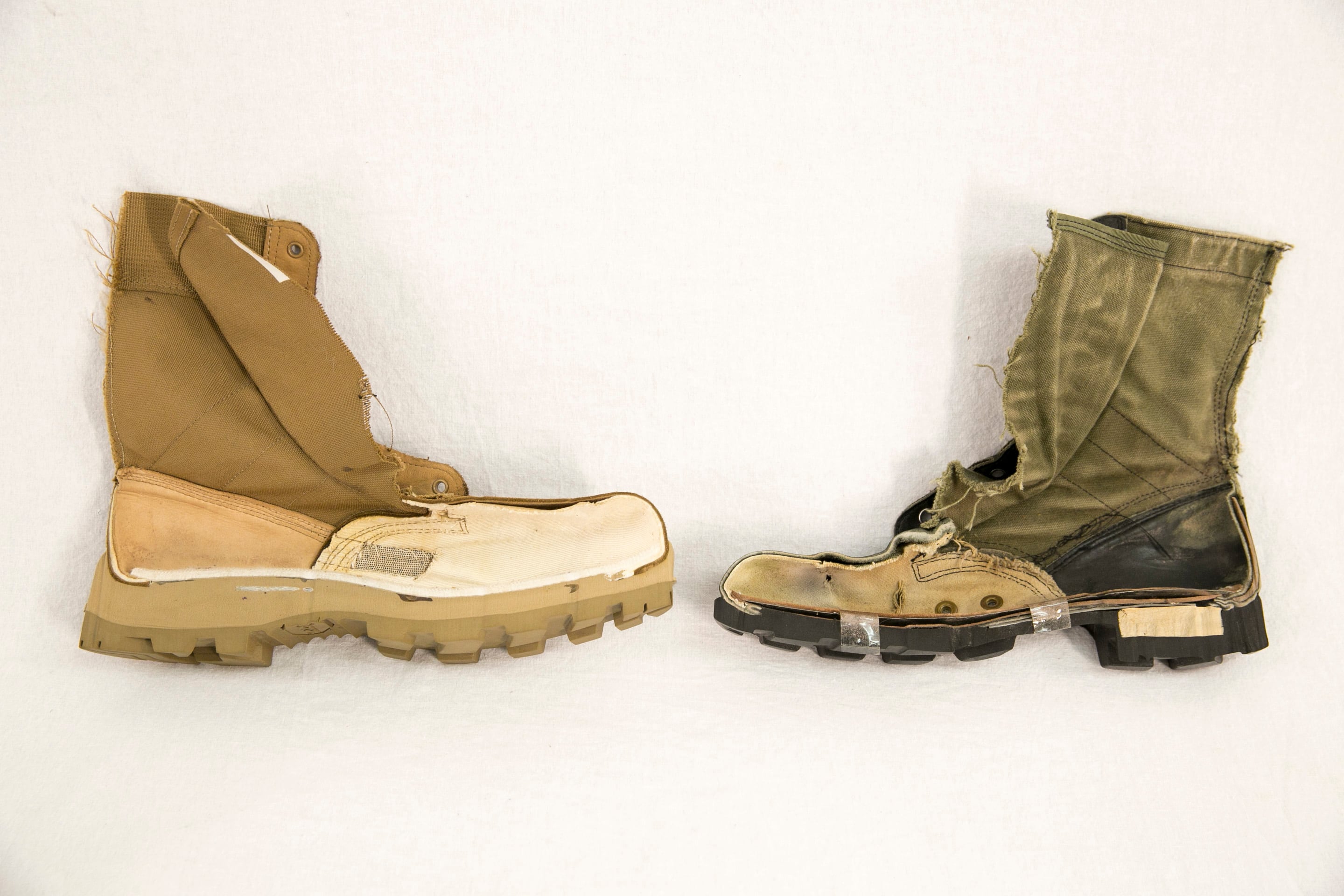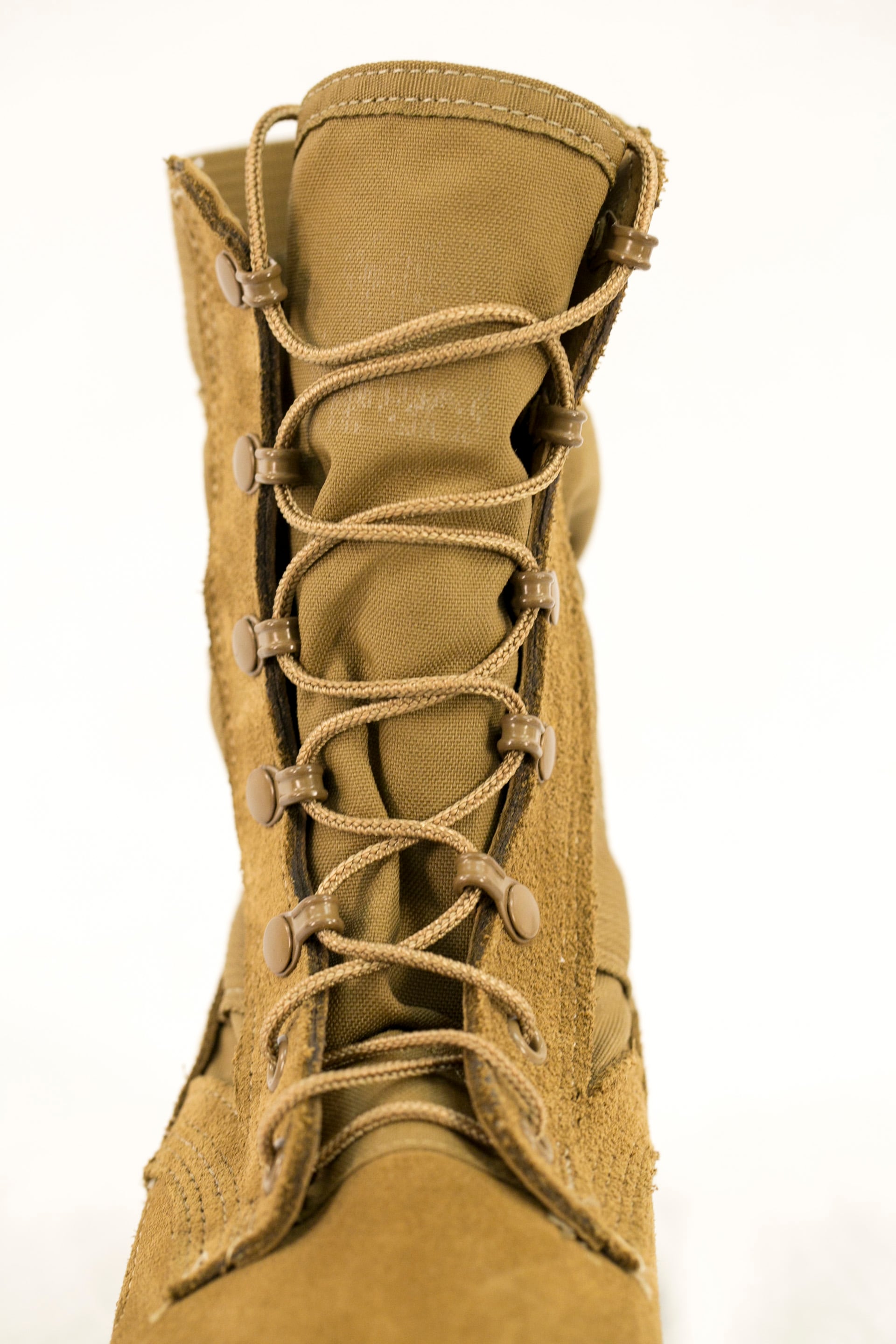The Army will outfit the first of two brigade combat teams with improved jungle combat boots this month, according to PEO Soldier officials.
The 25th Infantry Division in Hawaii tested the boots last year as part of the $4.1 million program, and their feedback helped Army researchers come up with the quick-drying, puncture-resistant, more comfortable version that will be fielded this year.
The push for boots more suited to operating in the jungle comes as the Army conducts more training and exercises in the wet, humid Pacific after years of fighting in the hotter, drier environments of Iraq and Afghanistan. The Army's 25th Infantry Division in 2014 even stood up the Jungle Operations Training Center to better prepare soldiers regionally aligned with Pacific Command — it is the first time the Army has had its own jungle school since Fort Sherman was turned over to the Panamanians in 1999.
Along with boots, the Army has been testing new uniform designs over the past year and a half to help soldiers better perform in tropical regions.
The new jungle boots improve upon the Vietnam-era boots. New features include:
- Thick layer of polyurethane to absorb shock.
- New tread pattern sheds mud easily.
- Perforated holes help with drainage.
- Treated knit mesh helps boots dry out and allows feet to breathe.
- Puncture-resistant soles replace steel plates.

The new Army Jungle Combat Boot features better traction, ventilation and puncture-resistant soles.
Photo Credit: Alan Lessig / Staff
Belleville Boot Company and Rocky Boots were awarded contracts in December to supply the Army with 36,708 of the boots as part of a direct requirement to find a better option for soldiers in tropical areas.
The plan is to have the 25th Infantry Division's 2nd and 3rd Brigade Combat Teams wear the boots in three-month phases — the first phase will run March to June, and the second phase will be June to September.
"We found the best testing is letting soldiers do what soldiers do," Lt. Col. John Bryan, product manager for Soldier Clothing and Individual Equipment at PEO Soldier, said Tuesday during a round table at Fort Belvoir, Virginia.
Each soldier will receive two pairs of boots. Eventually, the footwear will be available in sizes 3-16 with narrow, regular, wide and extra wide options. Troops in the first phase of fielding will receive sizes 7-12, but all sizes will be available by June or July.

This photo shows a cut-away of the new Army Jungle Combat boot, left, and the old, Vietnam-era jungle boot, right. The Army unveiled the new boot during a media round table Feb. 28, 2017, at Fort Belvoir, Va.
Photo Credit: Alan Lessig / Staff
Al Adams, footwear project engineer at the Natick Soldier Research, Development, and Engineering Center, said it's all about putting miles on the boots.
The soldiers will wear them during field training exercises, going to the range and potentially even PT, he said.
Adams said Natick researchers will ask the soldiers for specific feedback, including how well the boots handled the terrain, if there were any injuries and what the dry time was after the boots got wet.
"We can soak the boot in a bucket and weigh it over time to see how quickly it dries, but if that doesn't match up to what soldiers are feeling, then it's not really relevant," he said.

Soldiers in two 25th Infantry Division brigades will receive two pairs of the Army's new Jungle Combat Boots.
Photo Credit: Alan Lessig / Staff
Staff Sgt. Joshua Morse, a lead instructor at the Jungle Operations Training Center in Hawaii, said the original testing was a "huge success."
"A lot of us, including myself, have worn these boots for a year now," he said.
Morse said he wore the boots while he was in Brunei, on the island of Borneo. Morse, like a lot of soldiers, prefers to wear worn-in boots, so he started out wearing his standard boots that he had used in Iraq and Afghanistan.
"I got trench foot within a week," he said.
Then he realized he had the brand new pair of jungle boots that the Army wanted him to test, so he put them on.
"I was soaking wet every day but never had a problem with the boots," he said, adding that he saw others slipping and having problems.
Once the fielding ends in September, the Army will take the feedback from the soldiers and see if they're satisfied or if more tweaking needs to be done. The Army will decide which other units will receive the boots, based on contingency operations and other factors.
PEO Soldier officials said this boot isn't the final product since there could be changes made based on soldier feedback, but it's 80 percent there.
The Marine Corps is also testing a jungle boot, and the two services are working together to create the best product for troops, officials said.
"We don't want to go out and test the same boots or the same things," said Col. Dean Hoffman, project manager for Soldier Protection and Individual Equipment at PEO Soldier. "We're sharing the information so we can come together and see what's going to be the future boot."
Next up? Hot-weather uniforms to go with the new boots.
Hoffman said the Army is doing limited user evaluations with the Jungle Operations Training Center and NSRDEC for uniforms geared toward tropical regions.
"We don't see it being too much longer to where we're going to get a direct requirement or a capabilities document to pursue a hot-weather version for our existing uniform to be able to handle some of the extreme climate issues we have today," he said.
Charlsy Panzino covers the Guard and Reserve, training, technology, operations and features for Army Times and Air Force Times. Email her at cpanzino@militarytimes.com.
Charlsy is a Reporter and Engagement Manager for Military Times. Email her at cpanzino@militarytimes.com.




